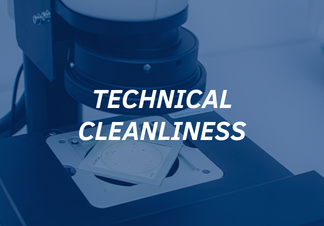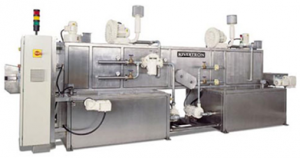
Technical Cleanliness
Technical Cleanliness is the set of requirements and methods to determine the level of acceptable dirt from each product, conducted through standardized analyses aiming at classifying the acceptable particles by:
• Type;
• Size;
• Mass;
• Quantity;
• Area, according to their respective applications.
This test category has been increasingly requested throughout the years.
When it comes to Cleanliness, automotive companies are pioneers in precision systems and parts for combustion engines, ABS braking systems, turbines, among others. Currently, the technique extends to other segments, such as food, aeronautic, semiconductors, pharmaceutical industries, among others. The parts designs present, in addition to dimensional and geometric tolerances, specifications with the degree of cleanliness the part must meet to have good performance.
The need for smaller tolerances makes the systems more sensitive to dirt and dragging of particles, since they can adhere to components. Thus, making sure that all critical components that request technical cleanliness go through all these processes is crucial for quality delivery. For this reason, we have this capacity at the SAMOT Group, to ensure value is added to the most specific and strictest market requirements.
SAMOT maintains the safety of your parts through properly conducted cleaning. In case of dirt tests, it is possible to conduct them on certified laboratories according to a frequency defined by the engineering group. For this purpose, the SAMOT Group has modern equipment to conduct technical washing of machined parts, with a specialized team for parameterization and specification of products for processing and packaging in clean room.

Washer – SAMOT Brazil Production Line
In addition to the necessary infrastructure to ensure the specifications on dirt, our plant in Brazil has laboratories to conduct tests, with equipment capable of determining the number and size of particles automatically and of distinguishing whether the particles found are metallic or non-metallic. Our test methods are based on requirements from the standard VDA 19, ISO 16232 or according to specific requirements from the customer.

